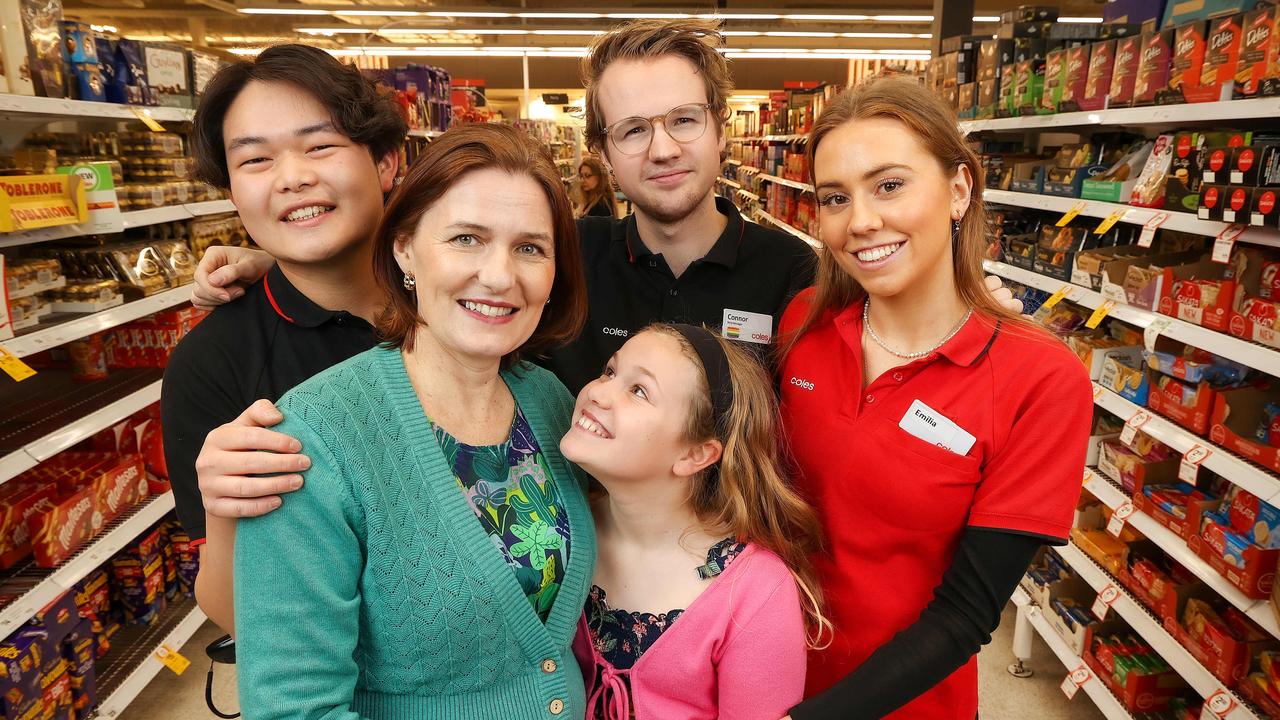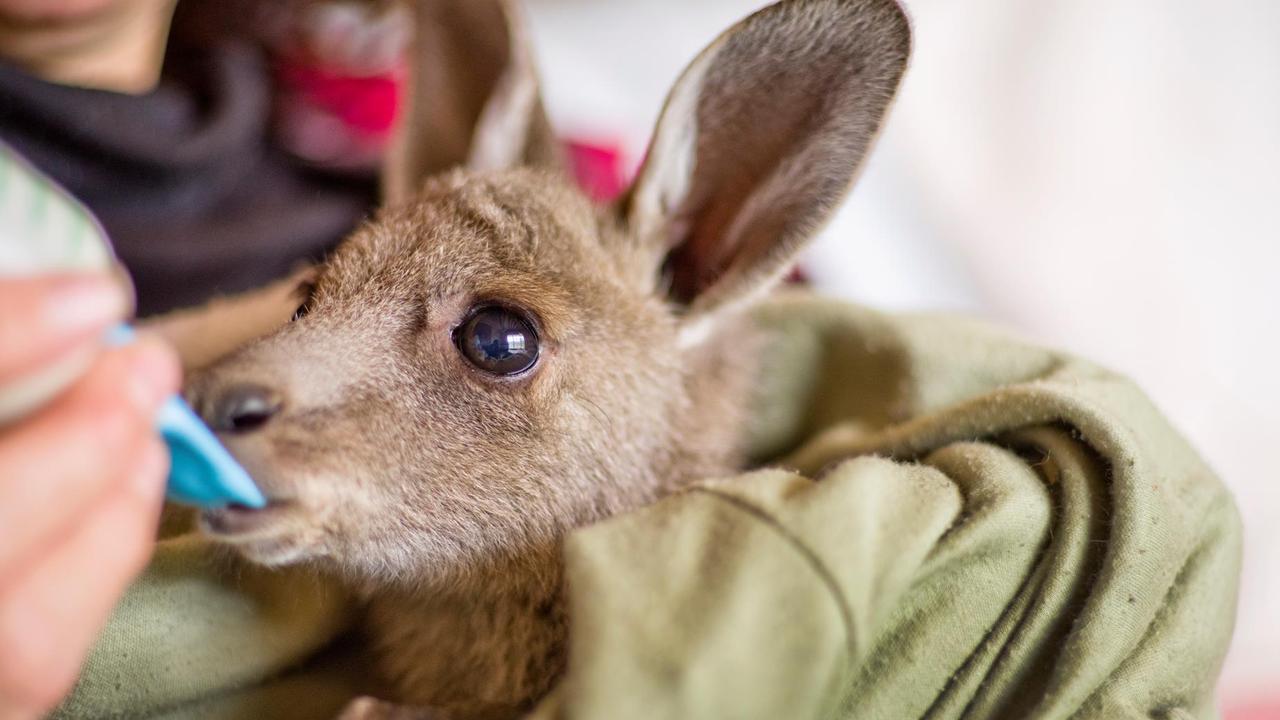Then and now: Travel back in time along Swanston Street
Travel back through time along Swanston St to see how one of the city’s most famous streets has changed over 150 years.
VIC News
Don't miss out on the headlines from VIC News. Followed categories will be added to My News.
It’s one of Melbourne’s founding roads.
Created as part of the 1837 Hoddle Grid, Swanston St charts the city’s transformation from a camp on the Yarra River to a metropolis of five million people.
WHERE TO FIND MELBOURNE’S OLDEST LANDMARKS
WILL TUNNEL DIG UNEARTH MELBOURNE PIONEER’S COTTAGE?
FORGET ME NOT: MELBOURNE’S GLORIOUS BUILDINGS



How Swanston St has changed over the years
Named after Hobart banker and leading Port Phillip Association member, Captain Charles Swanston, it was home to Melbourne’s first school.
Built by Melbourne founder John Batman in 1837, the bulk of the Roxburgh Ladies Seminary is thought to be underneath the Young and Jackson Hotel, which opened its doors as the Princes Bridge Hotel 23 years later.


Across the road, St Paul’s Cathedral stands at the site of Melbourne’s first public official service in 1836.
The land on the corner of Flinders St served as a corn market before the opening of a church, parsonage and school in 1852.
They were demolished in the 1880s to make way for St Paul’s Cathedral, designed by William Butterfield even though the architect never set foot in the colony.
The cathedral was finished in 1891 but work on its spires did not begin until 1926.



The Melbourne Town Hall was originally slated for the site of today’s Parliament House but this proposal was changed and switched to the intersection of Swanston and Collins streets.
The building was finished in 1854 before being torn down in the 1860s, with a new hall finished in 1870.
In 1888, the council purchased the police court building next door.
Part of the town hall had to be rebuilt after fire ripped through it in 1925.



The State Library of Victoria opened as the Melbourne Public Library during the gold rush in 1856, and was much smaller than today’s building.
Previously, the site housed a caretaker’s cottage and police buildings.
Various extensions were added to the library, torn down and replaced throughout the rest of the 19th and the 20th centuries.
The latest redevelopment is set to finish in 2020.


A Gothic Revival-style church was completed on the corner of Little Lonsdale St in 1863.
Now known as CrossCulture, it was designed by architect Charles Webb to replace a 1840s-era church at the same site.
Webb was also behind the Royal Arcade, South Melbourne Town Hall and Windsor Hotel.

Swanston St’s landmark Carlton and United Breweries Malt Store dates back to 1904, housing large malt tanks designed by Sir John Monash.
The site was abandoned in 1987 and bought by developer Grocon in 2006.
Three pedestrians — French student Dr Marie-Faith Fiawoo, and Melbourne siblings Bridget and Alexander Jones — died after a wall collapse at the site in 2013.
LIVES FOREVER CHANGED BY WALL TRAGEDY

The Melbourne City Baths opened in 1860 to stop people bathing in the increasingly-polluted Yarra River.
The current Edwardian Baroque-style building was finished in 1904 but had become run down by the 1940s.
There was a push to demolish the baths in the 1970s but restoration work the following decade included the addition of features like a gymnasium and spas.


The site of the former City Square earned its place in rock ‘n’ roll history when AC/DC used it to film a 1976 performance of It’s a Long Way to the Top.
Opened between Collins St and Flinders Lane in 1980, the square’s centrepiece was the controversial Ron Robertson-Swann-designed Vault sculpture.
Also known as the Yellow Peril, the piece later moved to Batman Park and then the Australian Centre for Contemporary Art.
City Square was demolished in 2017 to make way for Metro Tunnel construction works.


The Coop’s Shot Tower inside Melbourne Central is one of just three remaining towers of its kind in the country, and the only one you can climb.
Built between 1889 and 1890, the 50cm tall structure manufactured lead shots until its closure in 1961.
After nearly disappearing from the city’s skyline in the 1970s, it now houses a retail store and museum.
An 84m-high conical glass roof also sits around the tower to protect it from the elements.


QV, or the Queen Victoria Village, stands on the site of Victoria’s first hospital.
It started as a 10-bed cottage on the corner of Swanston and Lonsdale streets in the 1840s, growing with the gold rush before being rebuilt in 1912-13.
The Royal Melbourne Hospital, as it became known, moved to Parkville in 1944 before the Queen Victorian Hospital took over the buildings in the late 1980s.
The next decade saw the CBD site remain largely empty, something then-Premier Jeff Kennett labelled a “bloody disgrace”.
Much of it was sold to Nauru in the ‘90s but the country couldn’t afford the repayments and returned it to the Melbourne City Council in 1999.
The QV development was unveiled in 1999 and finished in 2004.


The Manchester Unity Building was the site of one of Melbourne’s most chilling crimes.
On St Patrick’s Day 1978, jewellers Paul Pace and Keith Hyman, and customer Robert Wartman, were shot dead execution-style during a heist.
Convicted killer Alex Tsakmakis was the suspect but never charged. Tsakmakis was then murdered in prison in 1988.
SERIAL KILLER SUSPECTED OF TRIPLE MURDER


Constructed in 1932, the 132-foot Chicago’s Tribune Tower-inspired building was Melbourne’s tallest at the time. It was also the first with an escalator.
The site had been purchased for 335,000 pounds by the Manchester Unity independent Order of Odd Fellows in 1928.

A major change hit Swanston St in 1992, with the banning of cars between Flinders and La Trobe streets.
The road partially reopened in 1999, between the hours of 7am and 7pm, before closing again to through traffic by 2012.
MORE MELBOURNE HISTORY
HOW YOUR SUBURB’S MAIN STREET HAS CHANGED
MELBOURNE'S BEST AND WORST MOMENTS




